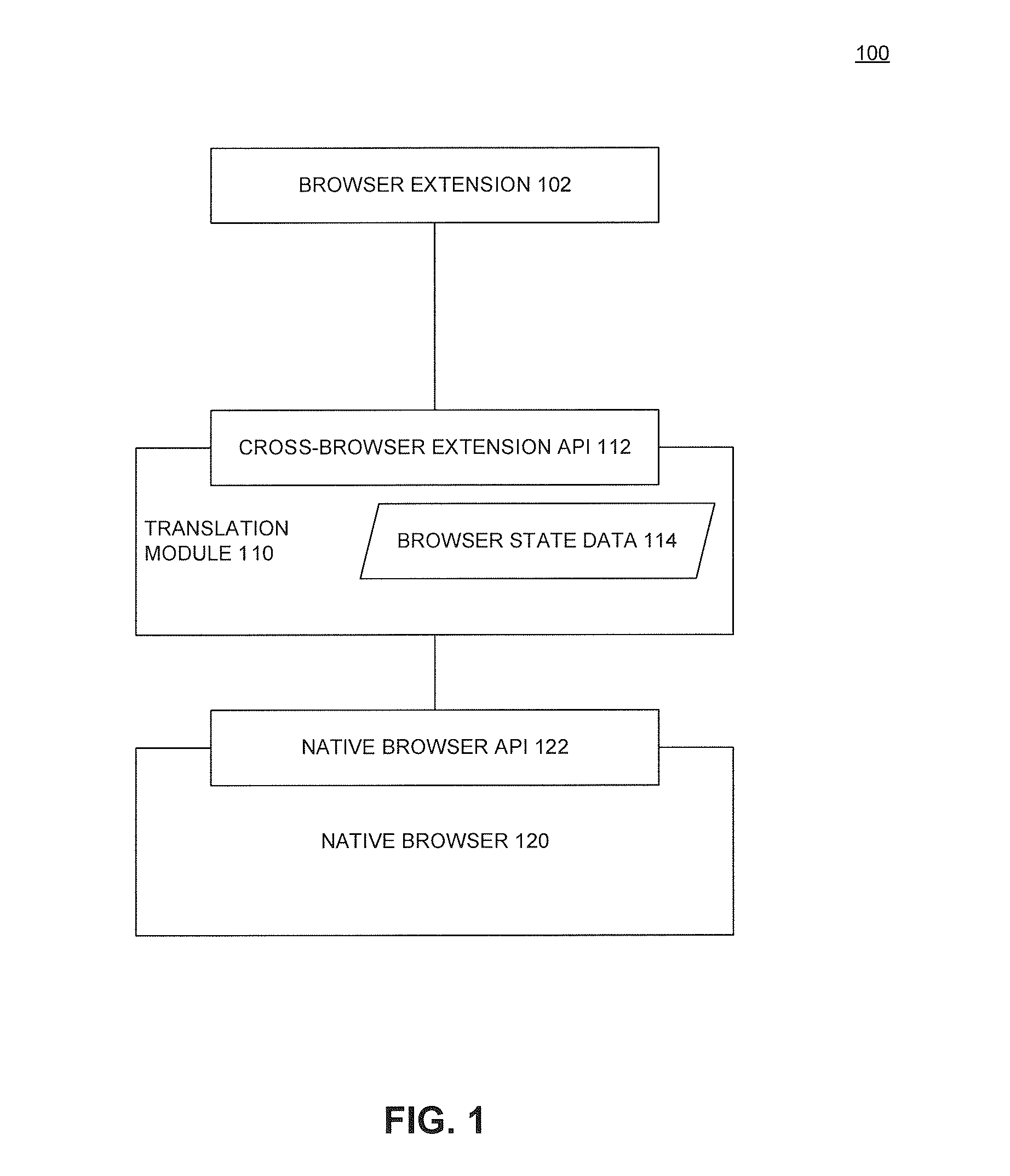Interfaces to enable cross-browser extensions and applications thereof
a cross-browser extension and interface technology, applied in the field of browser extensions, can solve the problems of bookmarklets not being persistently installed in the browser, and not being able to access as many system resources as browser extensions
- Summary
- Abstract
- Description
- Claims
- Application Information
AI Technical Summary
Benefits of technology
Problems solved by technology
Method used
Image
Examples
Embodiment Construction
[0019]Embodiments of this invention relate to an application program interface to enable browser extensions that can be executed in different browsers. In an embodiment, a browser extension may be written using commands written according to a cross-browser application program interface. When the browser extension is executed, the cross-browser commands may be translated into native commands of the browser. In an embodiment, the commands that require access to a document object model (DOM) of a page loaded in the browser may be executed on the thread that renders the loaded page. In a further embodiment the cross-browser application program interface may be, at least in part, an asynchronous interface. In this way, the cross-browser extension application program interface provides a stable, uniform interface to implement browser extensions that can operate in a plurality of different types of web browsers. These and other embodiments are described below with reference to the drawings...
PUM
 Login to View More
Login to View More Abstract
Description
Claims
Application Information
 Login to View More
Login to View More - R&D
- Intellectual Property
- Life Sciences
- Materials
- Tech Scout
- Unparalleled Data Quality
- Higher Quality Content
- 60% Fewer Hallucinations
Browse by: Latest US Patents, China's latest patents, Technical Efficacy Thesaurus, Application Domain, Technology Topic, Popular Technical Reports.
© 2025 PatSnap. All rights reserved.Legal|Privacy policy|Modern Slavery Act Transparency Statement|Sitemap|About US| Contact US: help@patsnap.com



